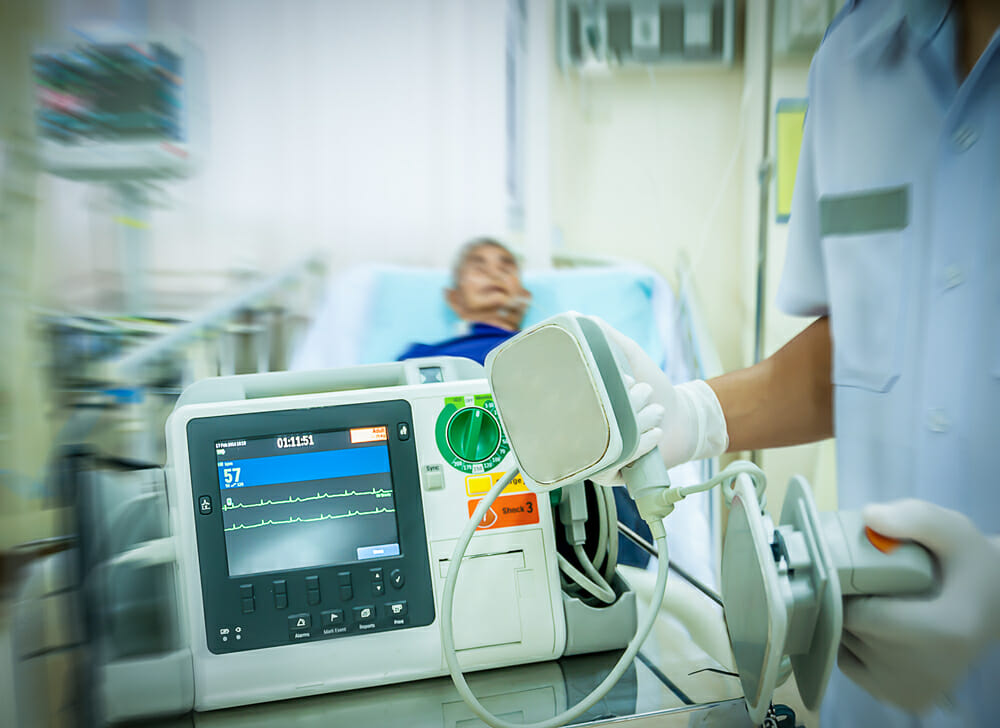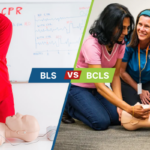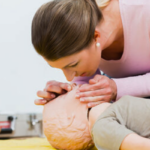
- Last Updated On: May 17, 2024
Why is CPR Sometimes Unsuccessful?
Cardiopulmonary resuscitation (CPR) is made up of a series of simple steps that can be used to circulate blood through someone’s heart and help them to begin breathing again. CPR is essential because, when effective, it can get oxygenated blood flowing again throughout the body. This means that the brain and other essential organs will continue receiving the oxygen-rich blood they need to keep functioning until medical professionals arrive. Without proper oxygenated blood flow, permanent brain damage can occur in the victim within only a couple of minutes.
Thus, because CPR is so essential to potentially keeping a victim alive, even if you’re not properly trained, it is always recommended that you offer some life-saving assistance when a person’s heart has stopped. This intervention could mean the difference between life and death. Even without CPR training, you can still assist someone in need by calling 911 before attempting CPR procedures to the best of your ability.
Because immediate and proper CPR is such an essential skill, it is also recommended that everyone take an accredited CPR training course, even if you don’t think you may ever have to use it. This information could end up being life-saving for you or a loved one.
Cardiac arrest and related complications annually kill close to half a million people in the United States. In fact, every year over 350,000 people in the United States (that’s the equivalent of one every 90 seconds) experience cardiac arrest. Thus, it is not uncommon to see someone succumb to some version of cardiac arrest at some point in your life, so it’s important you know what to do when an emergency situation arises,
What Is the Purpose of CPR?
The truth is that CPR is not intended to necessarily resuscitate the victim. Instead, it is simply meant to enhance the circulation of oxygenated blood throughout the body in order to ensure that the brain doesn’t die and that other essential organs can continue to function. Performing CPR properly increases the chances that the victim will make it to the hospital alive, even if they do not immediately regain consciousness.
Why is CPR Sometimes Unsuccessful?
Unfortunately, CPR is not always successful. Taking an accredited CPR class can increase your chances of saving someone whose heart has stopped, but there are some instances in which the victim does not survive. In order to understand why this is the case, it’s first important to look into the different types of death and why they occur.
Death can be divided into two very distinct classes: biological and clinical. Biological death relates to the brain. It means that the activities that go on in the brain have ceased. In other words, the patient is brain-dead.
On the other hand, clinical death relates to the heart, and it means that the heart has stopped beating. A person whose heart has stopped beating is clinically dead, though not yet biologically dead. The brain continues to perform some activities. However, this functionality diminishes with every passing second. In order to keep the victim from experiencing biological death a supply of oxygenated blood to the brain is necessary. CPR is performed in order to help the brain get the oxygen necessary to delay the onset of biological death.
However, it should be noted that CPR is not a replacement for actual breathing. No matter effectively you provide CPR procedures, the process can only provide a portion of the oxygen supply required to keep someone alive. Thus, CPR alone is not enough to continue keeping the victim alive for an extended period of time. Specifically, CPR cannot be solely relied on to keep the victim of a heart attack or stroke alive. Rather, they require specialized care from trained medical professionals in a hospital. Studies have shown that only about 5% of victims are adequately resuscitated by CPR alone, and thus, it is only a temporary measure that can be used in the short-term until professionals arrive and transport the victim to a proper facility.
What Are the Ways I Can Improve the Chances of Successful CPR?
Use an AED:
The odds of your CPR efforts become much more effective when used in conjunction with an automated external defibrillator (AED). The use of AED as soon as possible greatly increases the victim’s chances of regaining consciousness and making it to a medical facility so that life-saving procedures can continue.
Start CPR Procedures Immediately:
The sooner chest compressions and rescue breaths begin, the better the victim’s chances for survival. When dealing with an adult, should for someone to get an AED immediately and then begin CPR. When dealing with a child (aged 1-8), make sure to start compressions immediately, before you even designate someone to retrieve an AED.
Call 911 Right Away:
Again, the chances of the victim surviving are much higher if you contact emergency services immediately. As soon as you begin administering CPR procedures, be sure to designate someone to call 911 (along with telling them to retrieve an AED). If there is no one around to call 911, be sure to do so yourself. Do not leave the victim, but rather carefully take them to the area where a phone is located (being sure to support their head in case of spinal injury) and call 911 while administering your CPR procedures. The emergency professionals on the line can aid in keeping you calm and focused and assist with your technique while you’re waiting for help to arrive.
Only about 46% of Americans who succumb to heart attacks and related conditions each year receive any type of immediate CPR care. No matter your level of training or comfort, if you see someone experiencing life-threatening cardiac arrest, you should absolutely intervene. However, because CPR needs to be administered properly to have the highest chance of success, it is extremely important that all individuals take a CPR certification course in order to ensure that they’re prepared when the unexpected happens.
Where Can I Receive Proper CPR Training?
American CPR Care Association trains individuals on how to properly administer CPR procedures and correctly use an AED to help the victims of heart attack and other life-threatening complications. At the end of the fully-online course, a CPR/AED certification is issued, including an immediately downloadable certification card. Some of the key skills offered in the course are:
- Assessing the situation
- Performing CPR on Adults
- Child and Infant CPR
- The use of an automated external defibrillator
- How to deal with a person who is choking before administering CPR
Conclusion
Because of the uncertainty surrounding emergency, life-threatening situations, it’s critical for everyone, even non-medical professionals, to invest their time and effort in acquiring quality CPR/AED training. This will prepare you so that you will know what to do in a life-or-death situation and may allow you to save the life of someone suffering from cardiac arrest.
Thankfully, the American CPR Care Association offers fully-online, accredited CPR/AED courses to help ensure that you’re best prepared when an emergency situation arises. For more information on Online CPR/AED Certification, visit our website or reach out to us at 1-888-808-9109.






